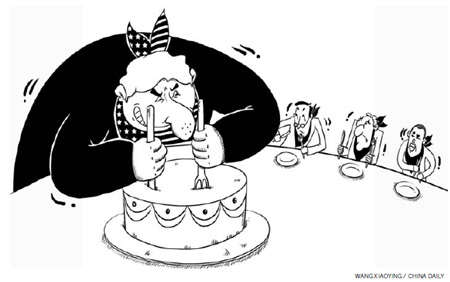Hegemony and Its Increasing Importance: a brief literature review
 In simple terms hegemony can be defined as “the predominant influence, as of a state, region, or group, over another or others” (The Free Dictionary, 2014, online). Alternatively, hegemony can be defined as “the leadership by a single stronger partner of other less strong, but still autonomous partners, undertaken for the mutual benefit of all parties concerned” (Warner, 2006, p.3).
In simple terms hegemony can be defined as “the predominant influence, as of a state, region, or group, over another or others” (The Free Dictionary, 2014, online). Alternatively, hegemony can be defined as “the leadership by a single stronger partner of other less strong, but still autonomous partners, undertaken for the mutual benefit of all parties concerned” (Warner, 2006, p.3).
Catley and Mosler (2007) specify power to play a significant role in terms of distinguishing between the notions of hegemony and colony. Specifically, according to Catley and Mosler (2007), the while the term of colony relates to direct use of power, hegemony is associated with indirect use of power. It can be further elaborated that direct power relates to intimidation in physical and psychological levels, whereas indirect power is exercised through legislature and tends to be latent (Schake, 2009).
In its basic form Warner (2006) considers hegemony as a struggle for authority and closely associates hegemony with power. Moreover, the role of power in hegemony has been stressed by Schake (2009), Nye (2011) and Zhang (2012). Basically, authors refer to positive correlation between power of a country and the level of its hegemony. Nye (2011) introduces the idea of smart power and defines it as “the combination of the hard power of coercion and payment with the soft power of persuasion and attraction” (Nye, 2011, p.xiii).
Schake (2009) stresses the importance of context of any particular situation when analysing the extent and use of power, and convincingly argues that analyses for the use of power should not be conducted without taking into account unique aspects of any given situation.
The name of Antonio Gramsci has featured in every source of secondary data analysed during the literature review that addresses the topic of hegemony in an adequate levels of depth. Gramsci (1891-1937) is widely believed to be author of the term of hegemony and the Gramscian approach perceives hegemony as a social relation within a country in general, and uses the term hegemony to mark the dominance of a specific social class over remaining classes in particular.
Hildebrandt (2009) divides individual and organisational parties with great interest on hegemony into three categories:
Realists are interested in hegemony in a way that they consider hegemony to be good to all parties involved. For this group of people non-hegemonic periods represent the period of concern, because they believe to the need for a major power to contribute to the facilitation of international trade.
Liberals consider hegemony to be obstructing and therefore they oppose hegemony. According to this group of researchers hegemonic states may exercise their power to gain unfair competitive advantage in the market, and therefore obstruct facilitation of the free market economy.
Radicals oppose hegemony in any forms due to their personal dislike of the concept and their stand is not usually based upon logical reasoning (Hildebrandt, 2009). Lee (2010) stresses the role of emotions and cultural background when explaining the negative approach of radicals towards hegemony.
The concept of hegemony has been linked by Russett (2011) to The Great Man theory, according to which some people are destined for leadership positions from the birth. In simple terms, Russett (2011) argues that hegemonic ambitions of a particular state are often fuelled by personal ambitions of heads of states and refers to the cases of Napoleon Bonaparte and Adolph Hitler in order to justify this opinion.
Boligun (2011) identifies three types of sovereignty – sovereignty of individual, sovereignty of a country, and sovereignty of institutions and specifies frequent conflicts between and amongst these groups as the main sources of international relations problems, escalating to become hegemonic problems. However, the main shortcoming of this claim can be specified in a way that Boligun (2011) fails to refer to any real-life case studies and examples to justify his stand.
Moreover, Boligun (2011) divides countries into five categories: a) mature democracies, b) democratic – authoritarian crossbreeds, c) theocracies (authentic and nominal), d) authoritarian states and military dictatorships, and e) failed states. Boligun (2011) explores the prerequisite for countries belonging to each of these categories in terms of becoming hegemonies.
This validity of this specific piece of work of Boligun (2011) can be assessed to be compromised due to the fact that it is based on broad generalisations, and does not take into account a wide range of country-specific factors such as cultural characteristics, the state of national economy, availability of resources etc.
References
Balogun, M.J. (2011) Hegemony and Sovereign Equality: The Interest Contiguity Theory in International Relations, Springer Group
Catley, R. and Mosler, D. (2007) The American Challenge: The World Resists US Liberalism, Ashgate Publishing
Hegemony (2014) The Free Dictionary, http://www.thefreedictionary.com/hegemony
Hildebrandt, R. (2009) US Hegemony: Global Ambitions and Decline, Peter Lang
Lee, L.R. (2010) US Hegemony and International Legitimacy: Norms, power and followership in the wars on Iraq, Routledge
Nye, J.S. (2011) The Future of Power, Perseus Books Group
Russet, B.M. (2011) Hegemony and Democracy, Taylor & Francis
Schake, K.N. (2009) Managing American Hegemony: Essays on Power in a Time of Dominance, Hoover Press
Warner, J. (2006) Hegemony and the Nature of Order, Disaster Studies Group
